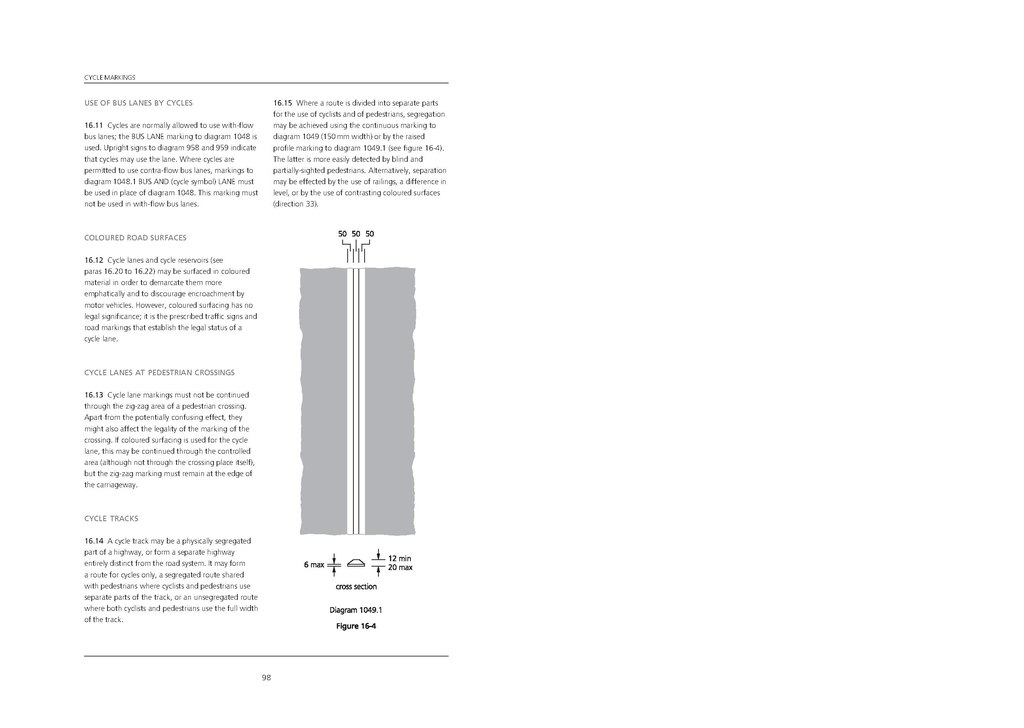USE OF BUS LANES BY CYCLES
16.11 Cycles are normally allowed to use with-flow bus lanes; the BUS LANE marking to diagram 1048 is used. Upright signs to diagram 958 and 959 indicate that cycles may use the lane. Where cycles are permitted to use contra-flow bus lanes, markings to diagram 1048.1 BUS AND (cycle symbol) LANE must be used in place of diagram 1048. This marking must not be used in with-flow bus lanes.
COLOURED ROAD SURFACES
16.12 Cycle lanes and cycle reservoirs (see paras 16.20 to 16.22) may be surfaced in coloured material in order to demarcate them more emphatically and to discourage encroachment by motor vehicles. However, coloured surfacing has no legal significance; it is the prescribed traffic signs and road markings that establish the legal status of a cycle lane.
CYCLE LANES AT PEDESTRIAN CROSSINGS
16.13 Cycle lane markings must not be continued through the zig-zag area of a pedestrian crossing. Apart from the potentially confusing effect, they might also affect the legality of the marking of the crossing. If coloured surfacing is used for the cycle lane, this may be continued through the controlled area (although not through the crossing place itself), but the zig-zag marking must remain at the edge of the carriageway.
CYCLE TRACKS
16.14 A cycle track may be a physically segregated part of a highway, or form a separate highway entirely distinct from the road system. It may form a route for cycles only, a segregated route shared with pedestrians where cyclists and pedestrians use separate parts of the track, or an unsegregated route where both cyclists and pedestrians use the full width of the track.

16.15 Where a route is divided into separate parts for the use of cyclists and of pedestrians, segregation may be achieved using the continuous marking to diagram 1049 (150 mm width) or by the raised profile marking to diagram 1049.1 (see figure 16-4). The latter is more easily detected by blind and partially-sighted pedestrians. Alternatively, separation may be effected by the use of railings, a difference in level, or by the use of contrasting coloured surfaces (direction 33).
98
